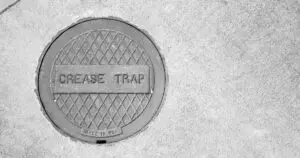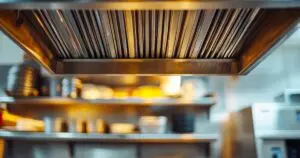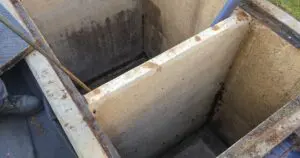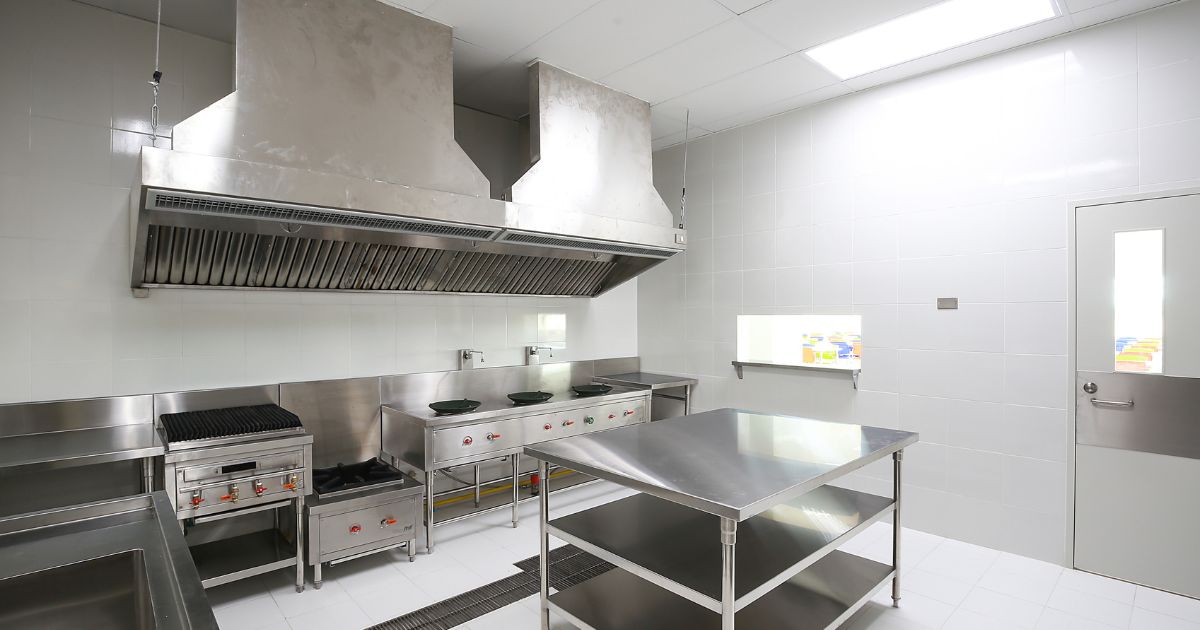Grease trap issues are a pressing challenge for any business operating a commercial kitchen, from bustling restaurants to cozy cafes. Left unresolved, these problems can disrupt operations, create unpleasant odors, pose health risks, and even result in costly fines for regulatory non-compliance. Effectively managing grease traps is not just about avoiding issues—it’s about ensuring the smooth, efficient operation of your kitchen and protecting your bottom line. In this article, we explore the most common grease trap problems and share practical strategies to address and prevent them, keeping your business running at its best.
What Is a Grease Trap?
A grease trap, also known as a grease interceptor, is a plumbing device designed to capture most greases and solids before they enter a wastewater disposal system. They are crucial in preventing fats, oils, and grease (FOG) from causing blockages in municipal sewer lines and treatment facilities.
Grease traps work by slowing down the flow of warm, greasy water, allowing it to cool. As the water cools, the grease and oil separate and float to the top of the trap, while heavier food solids sink to the bottom. The remaining wastewater exits the trap and continues to the sewer system.
Common Grease Trap Issues
Understanding the common grease trap issues can help in preventing them. Below are some of the most prevalent problems businesses face.
Grease Trap Overflow
One of the most common issues is grease trap overflow. This occurs when the trap becomes too full of accumulated grease and solids, reducing its capacity to separate FOG from wastewater. When this happens, excess grease can spill over into the drainage system.

Causes of Overflow
- Lack of Regular Maintenance: Failing to clean the grease trap regularly allows grease and solids to build up beyond the trap’s capacity.
- High Volume of FOG: Establishments with high grease output may fill traps faster than anticipated.
- Improper Trap Size: Using a grease trap that’s too small for your kitchen’s needs can lead to frequent overflows.
Consequences of Overflow
- Plumbing Blockages: Overflow can lead to severe blockages, causing backups that can shut down kitchen operations.
- Environmental Contamination: Grease entering the public sewer system can result in fines and legal penalties.
Foul Odors from Grease Traps
Unpleasant smells emanating from grease traps are not only off-putting for customers but can also indicate underlying problems. These odors are usually caused by the decomposition of trapped food particles and grease.
Impact of Foul Odors
- Customer Dissatisfaction: Bad smells can drive customers away, affecting your business’s reputation and revenue.
- Health Hazards: Foul odors can signify the presence of harmful bacteria or gases like hydrogen sulfide.
Blockages and Slow Drainage
When grease traps are not cleaned regularly, they can become clogged with solidified grease and food waste. This leads to slow drainage in sinks and dishwashers, disrupting kitchen operations and potentially causing sanitation issues.
Consequences of Blockages
- Operational Delays: Slow drainage can hinder kitchen efficiency, leading to longer service times.
- Plumbing Damage: Persistent blockages can cause pressure build-up, damaging pipes and requiring costly repairs.
Corrosion and Damage to Grease Traps
The buildup of acidic substances from decomposing food waste can lead to corrosion of the grease trap components. Over time, this can cause leaks and structural damage, necessitating expensive repairs or complete replacement of the unit.
Signs of Corrosion
- Leaks Around the Trap: Visible water or grease around the trap area.
- Rust Formation: Discoloration and rust on metal components.
- Structural Weakness: Soft spots or holes in the trap material.
Non-Compliance with Regulations
Health and environmental agencies have strict regulations regarding the disposal of FOG. Failure to maintain grease traps can result in violations, leading to fines, legal action, and damage to your establishment’s reputation.

Regulatory Risks
- Financial Penalties: Non-compliance can result in substantial fines.
- Business Closure: Severe violations can lead to temporary or permanent shutdowns.
- Legal Action: Repeated offenses may result in lawsuits or criminal charges.
How to Avoid Grease Trap Issues
Preventing grease trap issues involves a combination of regular maintenance, proper disposal practices, staff training, and professional assistance.
Regular Maintenance and Cleaning
Scheduling regular cleaning is the most effective way to prevent grease trap issues. Depending on the volume of FOG your kitchen produces, you may need to clean the trap monthly, bi-weekly, or even weekly.
Benefits of Regular Maintenance
- Prevents Overflows: Regular cleaning ensures the trap doesn’t exceed its capacity.
- Reduces Odors: Removing accumulated waste reduces the risk of foul smells.
- Extends Equipment Life: Proper maintenance can prolong the lifespan of your grease trap.
Proper Disposal Practices
Educate your staff on proper disposal of grease and food waste. Simple practices like scraping plates and utensils before washing can significantly reduce the amount of grease entering the trap.
Effective Disposal Strategies
- Use Sink Strainers: Install strainers to catch food particles.
- Dispose of Grease Properly: Collect cooking oil and grease in designated containers for recycling or disposal.
- Avoid Pouring Grease Down Drains: Encourage staff to never pour grease directly into sinks.
Staff Training
Ensure that all kitchen staff are aware of the importance of grease trap maintenance. Provide training on best practices to prevent unnecessary strain on the system.
Training Focus Areas
- Understanding Grease Traps: Educate staff on how grease traps work and why they’re important.
- Best Practices: Teach proper cleaning methods for kitchen equipment to minimize FOG.
- Emergency Procedures: Train staff on what to do in case of overflows or blockages.
Working with Professional Services
Hiring a professional grease trap service provider ensures that maintenance is carried out correctly and efficiently. Professionals can also inspect the system for potential issues before they become major problems.
Advantages of Professional Services
- Expertise: Professionals have the knowledge to identify and fix issues you might overlook.
- Regulatory Compliance: They can help ensure your grease trap meets local regulations.
- Time Savings: Outsourcing maintenance allows your staff to focus on core responsibilities.

Conclusion
Proactively addressing grease trap issues is essential to keeping your plumbing system in top condition and your business running smoothly. With regular maintenance, proper staff training, and the right professional support, you can prevent disruptions, avoid costly repairs, and stay compliant with regulations.
Environmental Remedies offers expert solutions for grease trap maintenance and environmental compliance, ensuring your business operates efficiently and adheres to regulatory standards. Our dedicated team provides customized services designed to meet your specific needs and support the long-term success of your operations.
Request a quote today to maintain a clean, compliant, and efficient kitchen environment. With our expertise, you can eliminate grease trap issues and focus on what matters most—running your business.






